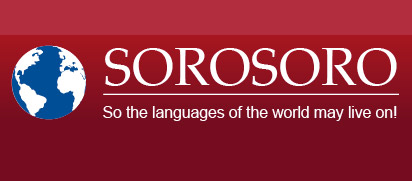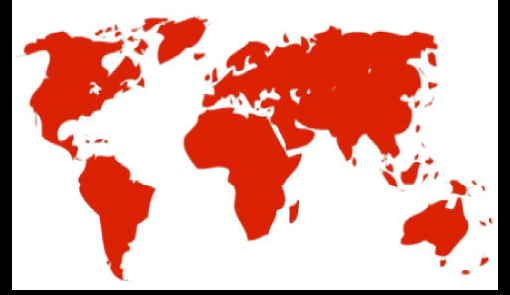Print  |
|


Yuki
Data collected by the UNICEF
Data on the Yuki language
This language shall not be mistaken with North American Yuki (now dead) nor Mbya, a Guarani language of the first group.
Alternative names: Yuqui, Bía, Biá yë, Mbia
The language is normally called Biá yë (“language of the people”), but the name “Yuki” seems to be more accepted within the community.
Classification: Tupi family, Tupi-guarani languages, group II
Geographic area: Bolivia, Cochabamba department, Carrasco province between the Rio Chimore and the Rio Ixilo in Biá Recuaté.
Number of speakers: 140 speakers on a total population of 208 people, according to Crevels (2010).
Status of the language: According to the supreme decree 25894 of September 11th, passed in the year 2000, Yuki is one of the “native languages recognized as official” in Bolivia.
Vitality and transmission: According to the UNESCO, Yuki is a “severely endangered” language.
Crevels (2010) yet underlines that a current thesis carried out by Callejas & Rioja would reveal a surprising liveliness of the Yuki language in the Biá Recuaté community, which appears paradoxical compared to the process of cultural adaptation and negation of identity the Yukis suffer from.
Historical and ethnographic observations
The Yuki are the last Guarani people in Bolivia to have made contact with the colonial culture. In 1965, Evangelists of the New Tribes Mission met the first groups of nomad Yukis. In 1971, a few families have started to settle for a sedentary lifestyle before two other groups were contacted and moved to Biá Recuat in 1986 and 1989. These relationships weren’t always peaceful, they were even violent at times between the Yukis and the farmers or railway workers who overran their territory.
Sedentary Yukis became entirely dependent on the missionaries who provided them with medicine, clothes but also food.
Nomad hunters-gatherers by tradition, the Yukis never managed to adjust to the sedentary economic system and the agriculture, so they are not able to produce enough of their own food and can’t gather resources as they used to as nomads. The consequences of this “maladjustment” to the sedentary way of life imposed by the missionaries and modern society are terrible for the Yuki people. 85% of the population suffers from tuberculosis and malnutrition, and many adults have developed an addiction to alcohol.
It appears a group of approximately four Yuki families would still live as nomads in the area of the Rio Usurinta.
In 1992, the Yukis constituted a Yuki Council, recognized as a representative organisation. This Council, along with the Yucaré Council, constitutes the Coordination of Indigenous Peoples of Cochabamba, recognized by the government and member of the CIDOB.
The Yuki were given a 127,000 hectare territory by the government, but the integrity of this territory is constantly stepped on by migrating non-local populations in this region undergoing economical growth.
For more information on the Yukis, see pages dedicated to them on the website Amazonia.bo.
And the many books of Allyn Stearman McLean on the subject.
Sources
Crevels, Mily (2010) Bolivia Amazónica In « Atlas sociolingüístico de pueblos indígenas en América Latina », UNICEF. Tome 1, pp 281-300.
Fabre, Alain. 2005. Diccionario etnolingüístico y guía bibliográfica de los pueblos indígenas sudamericanos. Available online [05/04/2011]
Online sources
Data collected by the UNICEF on Yuki
Page dedicated to Yuki on the Linguamón website
Additional bibliography
Melgar Ortiz, Erwin. 1990. Proceso de aculturación en los Yukís. Tesis de la Universidad Mayor de San Simón. Cochabamba (ms.).
Molina, Ramiro y Xavier Albó. 2006. Gama étnica y lingüística de la población boliviana. La Paz: Sistema de las Naciones Unidas en Bolivia.
PROEIB Andes. 2000. Estudios sociolingüísticos y socioeducativos con pueblos originarios de tierras bajas de Bolivia. Informe final. Cochabamba (Mimeo).
Stearman McLean, Allyn. 1989. Yuquí. Forest nomads in a changing world. New York: Holt, Rinehart and Wilson.
Stearman McLean, Allyn. 1995. Territorial rights and realities: The Yuquí development project in Lowland Bolivia. Bolivian Studies V/1: 11-22.
Teijeiro, José. 2007. Regionalización y diversidad étnica cultural en las tierras bajas y sectores del subandino amazónico y platense de Bolivia. La Paz: Plural Editores.
Villafañe, Lucrecia 2004. Gramática Yuki: lengua Tupí-Guaraní de Bolivia. Proefschrift Katholieke Universiteit Nijmegen. Tucumán: Ediciones del Rectorado, UNT.
See the Atlas sociolingüístico de pueblos indígenas en América Latina and Fabre (2005) for a complete bibliography.
Please do not hesitate to contact us should you have more information on this language: contact@sorosoro.org








